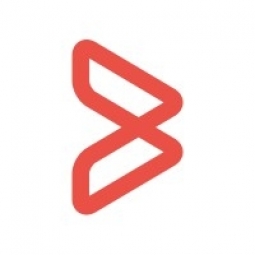Customer Company Size
Large Corporate
Region
- America
Country
- United States
Product
- Compuware Topaz Workbench
- ISPW
- Xpediter
- Micro Focus ChangeMan
- XebiaLabs XL Release
Tech Stack
- Eclipse-based IDE
- Jenkins
- Atlassian JIRA
- ServiceNow
- SonarSource SonarQube
Implementation Scale
- Enterprise-wide Deployment
Impact Metrics
- Productivity Improvements
- Innovation Output
Technology Category
- Application Infrastructure & Middleware - API Integration & Management
Applicable Industries
- Finance & Insurance
Applicable Functions
- Business Operation
Use Cases
- Infrastructure Inspection
- Predictive Maintenance
Services
- System Integration
- Software Design & Engineering Services
About The Customer
The customer is a major multinational financial services company. As part of its digital transformation, the company was looking to meet new customer demands for innovative services delivered through digital means. The company's mainframe was a core part of its operations, with 60 percent of processing and 70 percent of data still residing on the mainframe. This made the mainframe crucial to the company's ability to compete against nimble disruptors. However, the company was facing challenges due to the siloed nature of its mainframe, which operated with Waterfall-based processes and antiquated tools. This was causing delays in major projects and was a hindrance to the company's digital transformation efforts.
The Challenge
A major multinational financial services company was undergoing a digital transformation to meet new customer demands for innovative services. However, the company's mainframe was siloed, operating with Waterfall-based processes and antiquated tools, which caused delays in major projects. The mainframe developers were still using 3270 emulators for coding, which lacked the benefits of modern tools. The mainframe team had no automation in place, requiring multiple people and teams to move code from check-in to deploy and from development to production. There was no automated testing in place to handle online and batch testing, and there was a lack of testing frameworks as well as lack of integration with automated testing tools. The mainframe team had too many disparate systems involved in the process, so a developer/release manager would have to jump from one system to the next. With minimal change management integration, tracking changes end to end was a manual task.
The Solution
To lead their mainframe team into an Agile/DevOps transformation journey, the Director of Engineering implemented Compuware Topaz Workbench, ISPW—migrating 300 application developers from Micro Focus ChangeMan—and Xpediter. These tools integrate with many of the Continuous Integration/Continuous Delivery (CI/CD) tools the financial services company currently has in its mid-range DevOps toolchain, including Jenkins, Atlassian JIRA, XebiaLabs XL Release, ServiceNow and SonarSource SonarQube. These solutions provided the mainframe team with modern capabilities like a modern development environment with a full-featured Eclipse-based IDE, code completion, syntax highlighting, integration with tools, fully orchestrated deployment and testing built into the pipeline, integration with existing test and scanning tools as part of the pipeline, fully automated change management, and integration with Elastic’s ELK Stack for end-to-end metrics. The mainframe team now uses ISPW and Topaz Workbench for all development work. They use XebiaLabs XL Release for pipeline orchestration.
Operational Impact
Quantitative Benefit

Case Study missing?
Start adding your own!
Register with your work email and create a new case study profile for your business.
Related Case Studies.

Case Study
Real-time In-vehicle Monitoring
The telematic solution provides this vital premium-adjusting information. The solution also helps detect and deter vehicle or trailer theft – as soon as a theft occurs, monitoring personnel can alert the appropriate authorities, providing an exact location.“With more and more insurance companies and major fleet operators interested in monitoring driver behaviour on the grounds of road safety, efficient logistics and costs, the market for this type of device and associated e-business services is growing rapidly within Italy and the rest of Europe,” says Franco.“The insurance companies are especially interested in the pay-per-use and pay-as-you-drive applications while other organisations employ the technology for road user charging.”“One million vehicles in Italy currently carry such devices and forecasts indicate that the European market will increase tenfold by 2014.However, for our technology to work effectively, we needed a highly reliable wireless data network to carry the information between the vehicles and monitoring stations.”

Case Study
Safety First with Folksam
The competitiveness of the car insurance market is driving UBI growth as a means for insurance companies to differentiate their customer propositions as well as improving operational efficiency. An insurance model - usage-based insurance ("UBI") - offers possibilities for insurers to do more efficient market segmentation and accurate risk assessment and pricing. Insurers require an IoT solution for the purpose of data collection and performance analysis

Case Study
Smooth Transition to Energy Savings
The building was equipped with four end-of-life Trane water cooled chillers, located in the basement. Johnson Controls installed four York water cooled centrifugal chillers with unit mounted variable speed drives and a total installed cooling capacity of 6,8 MW. Each chiller has a capacity of 1,6 MW (variable to 1.9MW depending upon condenser water temperatures). Johnson Controls needed to design the equipment in such way that it would fit the dimensional constraints of the existing plant area and plant access route but also the specific performance requirements of the client. Morgan Stanley required the chiller plant to match the building load profile, turn down to match the low load requirement when needed and provide an improvement in the Energy Efficiency Ratio across the entire operating range. Other requirements were a reduction in the chiller noise level to improve the working environment in the plant room and a wide operating envelope coupled with intelligent controls to allow possible variation in both flow rate and temperature. The latter was needed to leverage increased capacity from a reduced number of machines during the different installation phases and allow future enhancement to a variable primary flow system.

Case Study
Automated Pallet Labeling Solution for SPR Packaging
SPR Packaging, an American supplier of packaging solutions, was in search of an automated pallet labeling solution that could meet their immediate and future needs. They aimed to equip their lines with automatic printer applicators, but also required a solution that could interface with their accounting software. The challenge was to find a system that could read a 2D code on pallets at the stretch wrapper, track the pallet, and flag any pallets with unread barcodes for inspection. The pallets could be single or double stacked, and the system needed to be able to differentiate between the two. SPR Packaging sought a system integrator with extensive experience in advanced printing and tracking solutions to provide a complete traceability system.

Case Study
Transforming insurance pricing while improving driver safety
The Internet of Things (IoT) is revolutionizing the car insurance industry on a scale not seen since the introduction of the car itself. For decades, premiums have been calculated using proxy-based risk assessment models and historical data. Today, a growing number of innovative companies such as Quebec-based Industrielle Alliance are moving to usage-based insurance (UBI) models, driven by the advancement of telematics technologies and smart tracking devices.
Case Study
Enhancing Security and Compliance in Remitly's Global Money Transfer Service with Fastly
Remitly, an online remittance service, was faced with the challenge of securing its proprietary global transfer network. The company needed a security solution that could meet PCI requirements and protect customers' sensitive transactions through its mobile application. The solution had to be capable of defending against new and emerging attack types without impacting performance. Remitly also had to deal with irregular traffic patterns, such as a sudden spike in account transfers from a small network segment on the Pacific coastline of South America. The company needed to determine in real time whether such traffic indicated an attack or valid requests. A traditional web application firewall (WAF) would not be able to distinguish this traffic, potentially leading to customer frustration if the IP was blacklisted.







